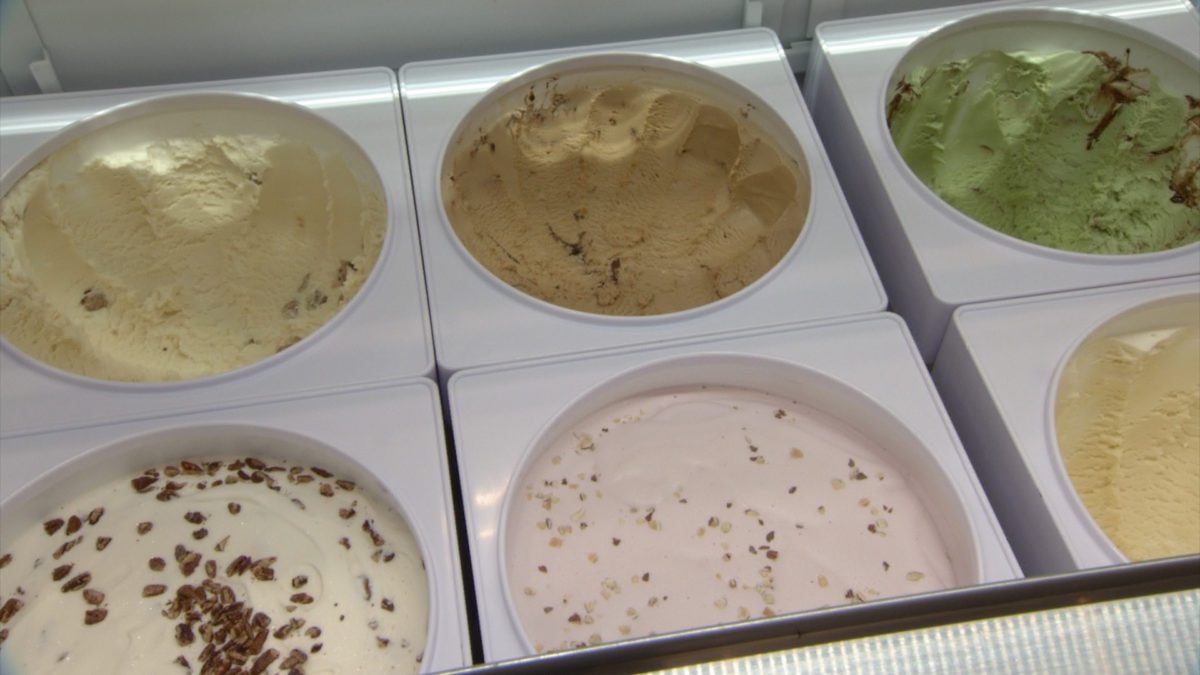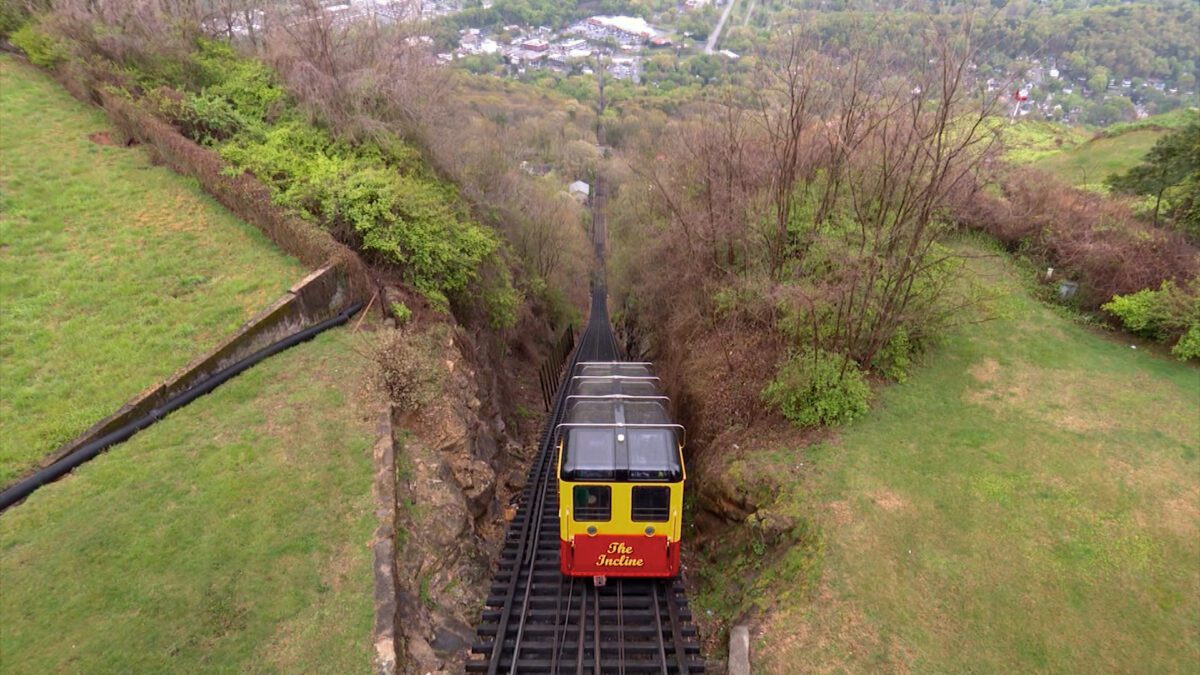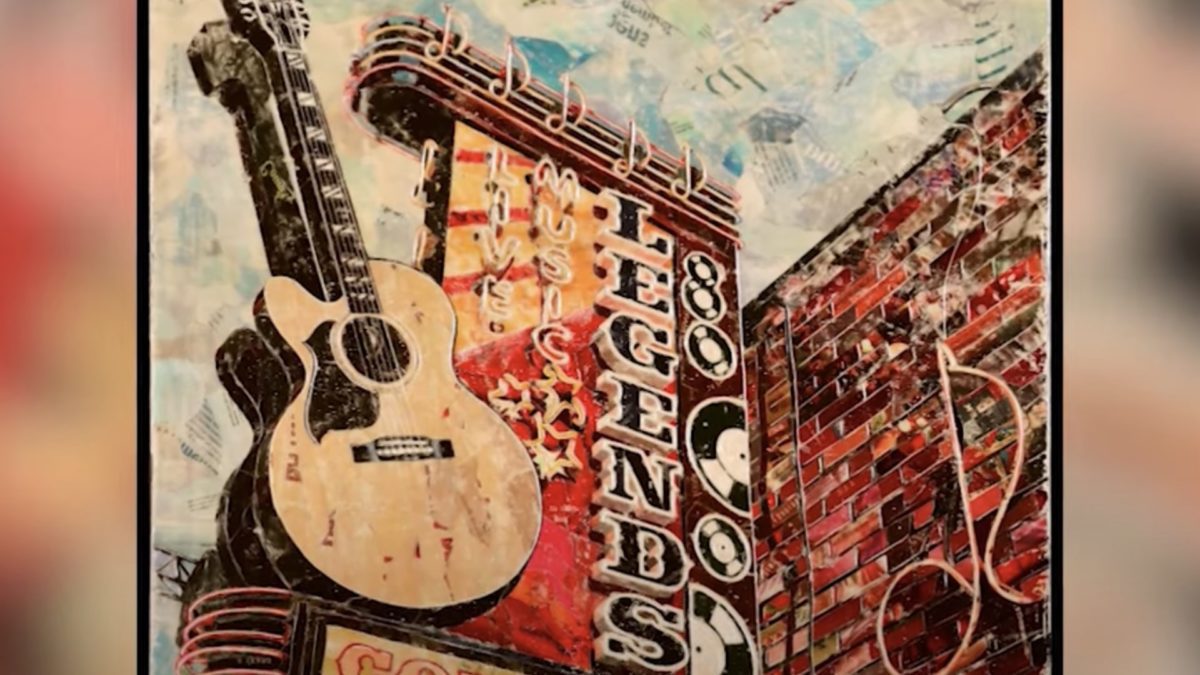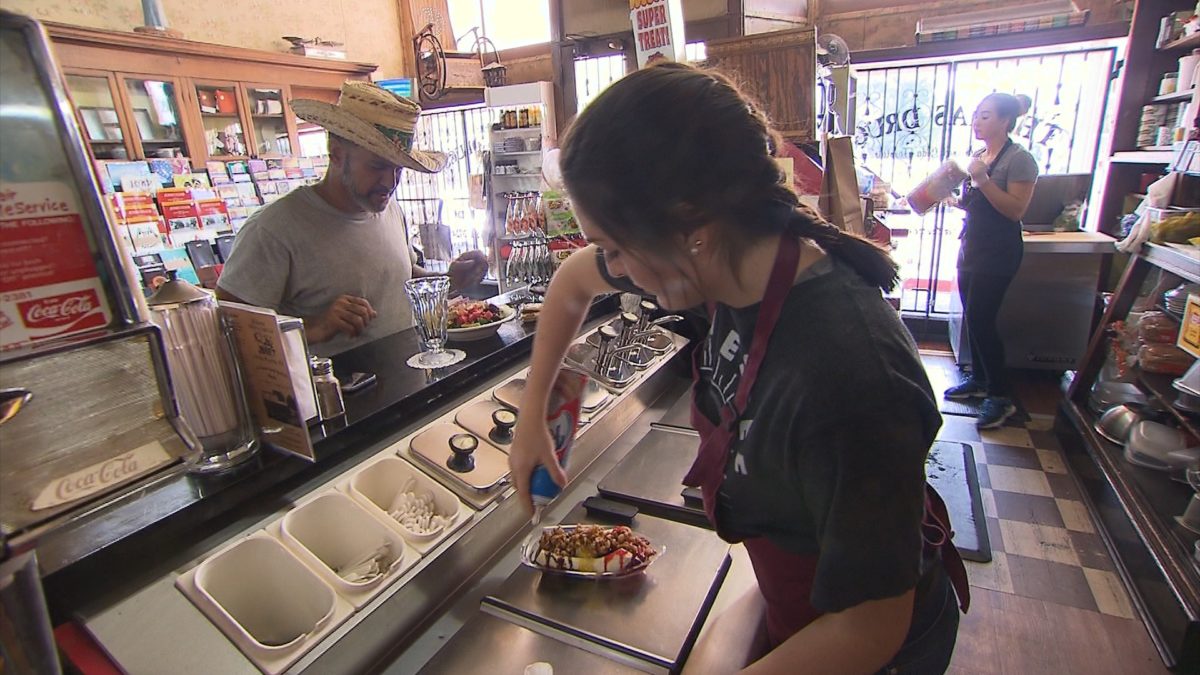Episode 3701
Don't have the PBS App? Click Here
Episode Transcript
- [Announcer] "Tennessee Crossroads" is made possible in part by. - [Phil] I'm Tennessee Tech President Phil Oldham. Here in Cookeville, Tennessee's college town, we are bold, fearless, confident and kind. Tech prepares students for careers by making everyone's experience personal. We call that living wings up. Learn more at tntech.edu. - [Narrator] Averitt's Tennessee roots run deep. They've been delivering logistics solutions here for over 50 years. And though Averitt's reach now circles the globe, the volunteer state will always be home. More at averitt.com. Discover Tennessee Trails and Byways. Discover Tennessee's adventure, cuisine, history and more made-in-Tennessee experiences showcased among these 16 driving trails. More at tntrailsandbyways.com. - This time on "Tennessee Crossroads" we take a ride on the incline railway over in Chattanooga, then discover a dairy full of treats in Chapel Hill. We'll see how a Leiper's Fork man uses insects in his art and enjoys some time travel at a Cross Plains drugstore. Hi everybody, I'm Joe Elmore. Welcome again to "Tennessee Crossroads." Well, pardon me boys. You've no doubt heard about the Chattanooga Choo Choo. Well, you know, there's one more choo choo in that scenic city, high atop Lookout Mountain. Miranda Cohen found one that takes passengers up above the clouds on a trip that's been called America's Most Amazing Mile. - [Miranda] It is called America's Most Amazing Mile. - All right, please have yours tickets ready. Make sure to watch your step. - [Miranda] Since the late 1800s, people have traveled to Lookout Mountain to do just that, take in the spectacular views of the Tennessee River Valley some 1600 feet below. The first cars carried coal and workers, but soon the magnificent views from above became the attraction. The sightseers showed up and the opulent Lookout Inn hotel was built as a mountain resort. - Well, Chattanooga has always been a tourist town, so them building the hotels, there was more and more people coming to flock to the mountain. - [Miranda] They also came to work and to trade and it became evident that there needed to be a safe, fast and cost-effective way to get travelers up and down the mountain. That's when the idea of the incline railway was born, a convenient and adventurous way to get people from point A to point B. Today, the hotel is gone and so are the boilers and steam that once powered the two railway cars on this parallel track. But the thrill of ascending and descending the mountain is still thriving. - Our cars run about six miles per hour and it goes from an elevation down in the valley of like 600 feet above sea level, and then we get to the top of the mountain, it's like 1200 feet above sea level. The track is one mile long. And grade at the steepest point is a 72.7% grade. And our cars are actually built on an 18 degree angle so that way if you come up the mountain, you're not falling out of your seats. So therefore the cars are built on a angle so when you're at the bottom you're kind of reclined in your seats, but when you get to the top, you're sitting level. - [Miranda] The story of the incline railway director, Matthew Higgins, is just as interesting as the railway itself. You see, Higgins grew up on Lookout Mountain in the shadow of the railway. - I was raised right beside the incline railway. My parents' house was probably within rock throwing distance of the incline tracks. So growing up we just always, I just always wanted to work there because you could see the maintenance people as they walked down and greasing the track. - [Miranda] In fact, Higgins and his friends put pennies on the track in the hopes of getting a smashed souvenir so many times that the conductor paid a visit and offered to fuel his fascination with the railway by offering him a job. - [Matthew] My first job was actually the night janitor here. I started out doing cleanup after hours and my dad would come up and pick me up after hours after I got done cleaning. - 36 years later, Higgins is the director of the incline railway. He calls all the shots, constantly overseeing the boarding, loading and unloading of the cars, monitoring traffic and the weather. He can also answer any questions the tourists have about Lookout Mountain or the engineering marvel that is the nation's steepest and safest incline railway. The incline railway in Chattanooga is called a funicular railway. It even has fun in the name. It is an ancient term, meaning pulling a rail car up the hill with a rope. But today it is done a lot more high tech. - These here are our 125 horsepower motors and then we have a coupler here that goes to a gear. And this here is one of our brakes for this particular side of our equipment. And then we just have different gear reductions here to more or less have the horsepower to be able to move our 12-ton cars up and down the mountain. - Car one is ready to go. - [Miranda] Just like the cars themselves, Higgins and his team are in constant motion, ensuring a safe, seamless and scenic ride for the tourists. - [Matthew] On a typical busy day, we can haul anywhere from three to 4,000 people, and that's running nonstop from daylight to dark. - Have a good day, thanks for riding. - Thank you. - Oh, it was great. It was steep at the top and the views were tremendous from the top. - [Miranda] Once at the top of the mountain, there are sweeping observation decks that offer panoramic views. You can tour the engine room or treat yourself to homemade fudge and hand-dipped chocolates. And everything and every one that goes up must come down. And that is a thrill, too. - [Matthew] The view through the roof is kinda like, it's an astrodome roof or a lot of people say it's almost like riding in a greenhouse 'cause there's so many windows in the top of the cars, the side of the cars. There's just so many windows and the view is beautiful in the springtime. - [Miranda] You can ride the rails rain or shine, and thanks to the ever-changing color show, you will always see something different. But the one thing guaranteed is a journey like no other. - [Matthew] If you've never ridden an incline, it's an experience that you will never ever forget. We get so many people that are just scared of heights, but once they get on the car, they actually say, "This isn't half bad at all," 'cause the view is just breathtaking. So they forget about their fear of heights and say, "I can do this." - Did you know there are almost 200 dairy farms in Tennessee ranging from just a few head of cattle to more than 1300? Well, we found one in Bedford County that produces more than just milk. In fact, Laura Faber gives us the scoop on the Nash Family Creamery - [Laura] Ice cream makes everything better and the homemade kind you can find in Chapel Hill makes for the sweetest stop if you are in the area. - Honestly, I really love ice cream. I love producing it, making it better, making flavors better, getting customer feedback. It's a real passion of mine, as simple as it sounds. - [Laura] Cody Nash is the owner of this creamery and a fourth-generation dairy farmer. - [Cody] So we're located south of Nashville about 25 miles at Nash Family Creamery. We're located in Chapel Hill. This location is on our dairy farm, so it's a retail location where we make our ice cream and our cheese and then serve our prepared lunches, our gourmet grilled cheese sandwiches and then some other local products that we sell, as well. - [Laura] Cody is hands-on when it comes to ice cream. The smaller the ice crystal, the smoother the ice cream. Then you freeze it solid at negative 17 degrees. He's got it down to a science. - It's about 14% cream and it has some items in it that help prevent the water and the fats from separating, prevent ice from forming in it. Obviously your sugar cream, all that stuff. And we'll make about from 90 to 100 batches a week during the summer. - [Laura] Since the creamery started scooping, people have been buying. 76-year-old Thomas Pope is a regular. He's tried every flavor, but he has a favorite. - I usually get butter pecan. Come every day except Monday they don't let me in. - [Laura] How is the ice cream? - [Thomas] It's good, it's good. - Alicia is about to deliver to me something called the cow trough. Thank you, Alicia. This is like the mac daddy of ice cream desserts you can get here. Seven scoops of ice cream, four cookies, fudge and whipped cream. Bon appetit. The story of this family farm dates back to 1929 when Cody's great grandparents started milking cows in California. Their son Howard took over in 1935, growing the farm to 280 acres and 200 cows. 1979 brought illness to Howard and his son, Cody's father Steve, took over, growing it even more to 1200 cows and winning all sorts of awards. - I love cows. Okay, I love dealing with cows. They're just something I bond with. So we knew we had to grow. - [Laura] Growth meant finding a new place to farm, thanks to drought and new regulations. They settled on 480 acres in Tennessee and the Nashes moved just outside Nashville. - When I drove up the driveway, I could see that the stables was gonna be my calf barn, that the shop and kind of riding area was gonna be a shop for us, a storage area for different feeds. It had a big hay barn. I says, "It's perfect. "That's where we're gonna store all of our feeds." So it was just for me, just the light turned on. The actual angle and slope of the ground was perfect for building these barns. - [Laura] The farm continues to diversify. The Nashes make their own cheese from the herd's milk. On this day, cheese master Sean Clement, is making cheese curds. This vat holds 2,700 pounds of raw milk and will make eight 40-pound blocks of cheese. - Yellow cheddar, and then we have white cheddar, as well as our jalapeno, which is on the back wall and some of it is here. Several types of flavored curds, Jamaican jerk. And then we do have ranch, as well as our original and our jalapeno. - [Laura] Making curds is very science-y. pH levels, temperature, the cooking and cutting and aging all matter and nothing goes to waste. The whey, as in curds and whey, is siphoned off and sent back to the barn to use for feed. As an agribusiness major in college, Cody knew he wanted to continue working the family dairy farm, but realized they had to offer more than just raw milk. Research led him to cheese and ice cream. - Me and my dad went up to Wisconsin for a week in July and just ate cheese and ice cream for like four or five days just looking at what people were doing up there. So this was just a lot of years of research that came into this before it opened. And this is kind of the culmination of all of it. - You can also tour the Nash Dairy Farm. They are big on educating the public about farming. There are more than 1100 head of Holstein cattle on the Nash Family Farm. This is your classic dairy cow. They produce more milk than any other breed. And these girls are about ready to go get milked. On the tour, you can watch the milking process and visit the calf bar and the babies and learn about all the work that goes into agriculture and providing food for us all. It is not lost on the Nash family how special it is that their little family business continues to flourish and bring new things to their community and beyond. - [Steve] Well, they say about 95% of farms don't make it past the third generation, and here we have the fourth generation is growing it. - [Cody] From day one, it's blowing the wheels off of what we expected. So it's been, it's been a blessing. - Thanks, Laura. When it comes to the art world, it seems like there are as many styles of art as there are artists. For example, a Leiper's Fork man depends on insects for his medium. Cindy Carter paid him a visit to see what this buzz is all about. - [Cindy] Artist Randy Purcell makes several deliberate, painstaking, even repetitive moves to bring his art to life. And he wouldn't have it any other way. - I feel like I'm more of a process artist. I love the outcome of my paintings, but to me it's more about these different steps that I have to take. - [Cindy] Randy's steps lead him to end results like these. Randy is an encaustic artist, which means he coats his birchwood backgrounds with beeswax and then burns in colors, textures and objects to create his artwork. - [Randy] That's one thing I love about my technique is that the paintings look almost like a photo from a distance. And as you get closer, you start seeing how it's dissected. - [Cindy] Dissected upon closer inspection with the various texts and inks he pulls from the pages of magazines. - [Randy] I figured out that you could transfer an image from a magazine on top of beeswax. Something about that I just thought was really cool. - [Cindy] Randy's rather unique technique starts with a photograph he uses as his template. He then cuts up that design into different shapes. Each template piece is replaced with an identically shaped piece of recycled magazine paper, face down. So the magazine paper's ink or text transfers onto the beeswax-covered background. It's not the same as using the old paint and brush, and that's the point. - [Randy] I don't have a finished vision of what this piece is gonna look like because I don't know what textures and colors I'll run across in the magazines. - Veranda, Cigar Aficionado, even Marie Claire. These are the magazines Randy uses in his work and he's very particular about his selections because not all magazine ink transfers the same. - [Randy] I go through and I look for things that I feel fit with the image, whether it be color or maybe a texture. - [Cindy] The magazine paper transfer not only gives Randy's work a different look, but thanks in large part to the beeswax, his art also feels different. For that reason, any old store bought beeswax just won't do. Randy likes it natural, impure and local. - [Ross] There's our queen right here. - [Cindy] Nashville Beekeeper Ross Welben is completely comfortable keeping the company of royalty. Ross carefully cares for dozens of beehives across the area, which support his honey trade. - Basically every part of the beehive can be used for something. - [Cindy] These hardworking employees keep Ross's East Nashville Honey Tree Meadery in operation and also allow him to do some sweet business with clients outside the meadery, like Randy Purcell. - [Ross] After we harvest honey, there's lots of wax cappings, as well. And that makes for really good purified wax also. So it's basically hive parts that we're not using anymore. We kind of take that wax and give it to Randy to harvest the wax out of it. - [Cindy] Ross admits he never dreamed handing over some beeswax would lead to such a beautiful partnership. - [Ross] Oh, I was floored when I first saw all of his work and like what he was doing with it. It's amazing, it's incredible. He's got something really special that he does, for sure, and we're really lucky to be able to be a part of it. - [Cindy] It's a partnership Randy believes brings even more authenticity and dimension to his artwork. - [Randy] With mine using pure beeswax, the reason I do is because it's tackier, still has some impurities in it. - [Cindy] A perfectly imperfect start. And every step that follows for this self-proclaimed process artist is an exploration towards something he hopes really reaches people, that others enjoy the destination as much as he enjoys this journey. - [Randy] There's not a better feeling to know that you created something that somebody would spend money on to keep it their house to remind them of whatever that moment is when they walked up to the painting. - Well, finally, there are day trips, then there are exceptional day trips. If you're up for the latter, well, consider a drive up to Thomas Drugs in Cross Plains. Now, while the pharmacy is pretty up-to-date, the rest of the place is truly frozen in time, including the timeless soda fountain. It's a timeless jewel on the main street of Cross Plains, Tennessee. A building built in 1915, now on the Register of Historic Places. It was a general store before the Thomas family owned and operated it from the 1930s to the mid '70s. That's when Dan Green, fresh out of pharmacy school, came and bought it. - I wanted to go back to a small town. I had an opportunity to go with a hospital chains but I decided I wanted to go back to a small town. I grew up in a small town. I just enjoyed the small town flavor and I wanted to find a place that I could work and I enjoy. - [Joe] Debbie Green was living 500 miles from here when back in the '80s, she came to visit her sister and met her future husband. - She did have us for dinner, and I met Dan and he invited me for a cherry coke the next day. And I decided to sleep in and I didn't come for the coke. And he called me later. He said, "Are you coming for a cherry coke?" And I said, "Well, I'll see you next time." So maybe that cinched it. Maybe he said, "Well, she's the first one "I've invited for a cherry coke that didn't come." So anyway, he was an eligible bachelor and he's just a wonderful guy. And so after I met him the second time, 500 miles wasn't so far. - [Joe] Although it was indeed true love, it didn't hurt that Debbie was also a registered nurse. - I do flu shots. I can make you a milkshake or I can give you a flu shot. - [Joe] The soda fountain is a treasure in itself, not only for its authentic look and feel. They do things the old fashioned way, as well. - [Debbie] We don't use shake base in our milkshakes. We use real ice cream. We make 'em to order. If you want peanut butter, coffee and chocolate in one milkshake, we can throw it all in there for you. - [Joe] Banana splits are a soda fountain favorite too, complete with all the traditional toppings. And where else are you gonna find a real fountain-style ice cream soda? - I had a lady that comes here and she still comes, she drives from Nashville and she'll get two at a time. She will drink two at a time because she cannot get them anywhere else. - [Joe] For lunch, you can get salads and sandwiches, including this tower of a cheeseburger or even one of their grilled peanut butter sandwiches. To wash it down, there's another Thomas Drugs' favorite, salted lemonade. - [Debbie] And it's fresh squeezed lemon. We put simple syrup in it with some carbonated water, a little salt, and it's really a lemonade with a little zest to it. - Thank you. - You're welcome. - And that's how you make the famous Thomas Drugs salty lemonade. But if you're on a super tight budget, there's always the hobo float, toothpick and a glass of water. - [Dan] The fountain attract people from all over the world or all over the country come and have lunch with us and have ice cream treats. And it's a great thing. It's a great draw. - [Joe] After enjoying a fountain treat, you'll want to browse the store's showcases. Many of them are as old as the building itself. - Some of the showcases that we have here came from Nashville Showcase Company in 1915. Was very, very fortunate that the fellow that was here, Burgess Thomas, he was kind of a maverick and he didn't paint everything. And it was a period of time in the 1950s that everything had to be sterile, painted white. All the shelves had to be painted white. But he said, "No, I'm not gonna do that." And thank goodness he did not do that. - [Joe] Those showcases are filled with all kinds of old and new items for sale. Everything from custom sweatshirts to vintage toy reproductions that visitors get a bang out of. In the back is the part that pays the bills, the pharmacy, which serves the health needs of the entire community. - We call it when two worlds meet. We got the high tech, we've got the computers and all the internet and wifi and then we have the 1930s or '50s soda fountain. - [Joe] The Davis's have provided part-time work for countless high school and college students from the surrounding area. Hannah Davis practically grew up here working at the soda fountain before earning a degree in pharmacy. So if you need a prescription filled or your tummy filled, you can do both at Thomas Drugs, a timeless store, full of warm friendly nostalgia. - We make friends all over the world. It's just incredible and they're very kind to us. - Well, that's all the time we have for this week. But before we go, be sure to check out our website, Tennesseecrossroads.org. That's where you can find links to past stories and shows. And you can also download the PBS app so you can watch this show and many others, anytime, anywhere. But most importantly, remember to join us here next time. We'll see you then. - [Announcer] "Tennessee Crossroads" is made possible in part by. - I'm Tennessee Tech President Phil Oldham. Here in Cookeville, Tennessee's college town, we are bold, fearless, confident and kind. Tech prepares students for careers by making everyone's experience personal. We call that living wings up. Learn more at tntech.edu. - [Narrator] Averitt's Tennessee roots run deep. They've been delivering logistics solutions here for over 50 years. And though Averitt's reach now circles the globe, the volunteer state will always be home. More at averitt.com. Discover Tennessee Trails and byways. Discover Tennessee's adventure, cuisine, history and more made-in-Tennessee experiences showcased among these 16 driving trails. More at tntrailsandbyways.com.
Tennessee Crossroads
July 06, 2023
Season 37 | Episode 01
Miranda Cohen takes a ride on the Incline Railway in Chattanooga. Laura Faber discovers a dairy full of treats in Chapel Hill. Cindy Carter sees how a Leiper’s Fork man uses insects in his art. And Joe Elmore enjoys some time travel at a Cross Plains drugstore.




